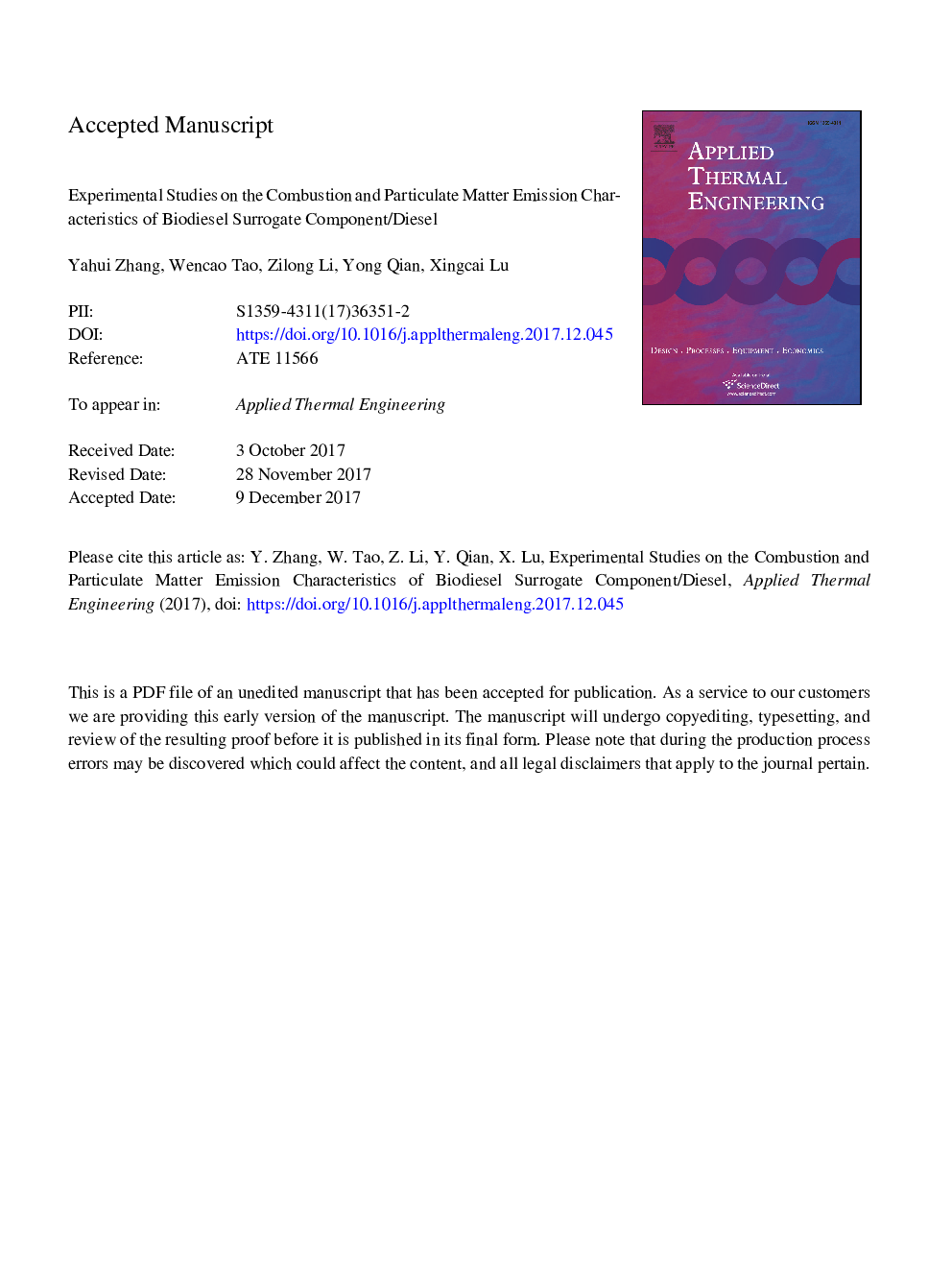| کد مقاله | کد نشریه | سال انتشار | مقاله انگلیسی | نسخه تمام متن |
|---|---|---|---|---|
| 7046232 | 1457098 | 2018 | 39 صفحه PDF | دانلود رایگان |
عنوان انگلیسی مقاله ISI
Experimental studies on the combustion and particulate matter emission characteristics of biodiesel surrogate component/diesel
ترجمه فارسی عنوان
مطالعات تجربی بر روی ویژگی های احتراق و ذرات ریخته گری اجزای جایگزین بیودیزل / دیزل
دانلود مقاله + سفارش ترجمه
دانلود مقاله ISI انگلیسی
رایگان برای ایرانیان
موضوعات مرتبط
مهندسی و علوم پایه
مهندسی شیمی
جریان سیال و فرایندهای انتقال
چکیده انگلیسی
By blending methyl decanoate (MD) and methyl hexanoate (MH) with diesel, the combustion and particulate matter (PM) emission characteristics were investigated. The experiments were carried out at various direct injection timings (â1/â3/â5/â7/â9/â11/â13â¯Â°CA ATDC) and EGR rates (0/20%/40%/60%) along with a fuel consumption fixed on 45â¯mg/cycle. The results showed that with the delay of injection timing and the increase of EGR rate, the in-cylinder maximum pressure decreased and the peak value of heat release rate increased. By retarding the direct injection timing, the particle geometric mean diameter (GMD) of diesel, MD/diesel and MH/diesel could be reduced by 18.4%, 68.6% and 68.1%, respectively. At the late injection timing, the total particle number of MD/diesel and MH/diesel increased sharply from about 4â¯Ãâ¯106#/cm3 to around 1â¯Ãâ¯108#/cm3, while the diesel total particle number decreased remarkably from 1.1â¯Ãâ¯108#/cm3 to 4.2â¯Ãâ¯107#/cm3. Postponing the injection timing and increasing the EGR rate could reduce the number concentration and GMD of accumulation mode particles. MH/diesel possessed a lower particle number concentration as a result of the higher oxygen content, better volatility and longer ignition delay. The total particle GMD and nucleation mode particle GMD of two blends were larger than those of diesel, while the accumulation mode particle GMD was less than that of diesel. The presence of oxygen in fatty acid methyl ester (FAME) molecule was effective on prohibiting the formation and development of accumulation mode particles, while not having significant effects on the nucleation mode particles. At the injection timing of â7â¯Â°CA ATDC, diesel, MD/diesel and MH/diesel got the maximum indicated thermal efficiency of 44.1%, 43.3% and 43.3%, respectively.
ناشر
Database: Elsevier - ScienceDirect (ساینس دایرکت)
Journal: Applied Thermal Engineering - Volume 131, 25 February 2018, Pages 565-575
Journal: Applied Thermal Engineering - Volume 131, 25 February 2018, Pages 565-575
نویسندگان
Yahui Zhang, Wencao Tao, Zilong Li, Yong Qian, Xingcai Lu,
